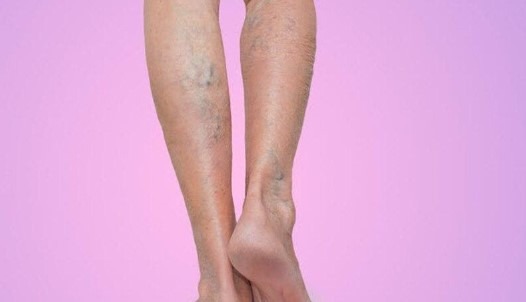It seemed okay when you saw a bulging vein or two, but over the years, the bulges doubled and the pain just kept increasing. Now, it’s too much to bear. According to the Nation Center for Biotechnology Information (NCBI), one out of every five adults suffers from varicose veins. Like most medical conditions, varicose veins get worse over time if not treated. Fortunately, there are several treatments available to address these visible veins.

What Do Varicose Veins Feel Like?
Varicose veins occur when there is a valve malfunctioning and the blood that has to be pumped to your heart doesn’t flow smoothly. A person’s feet and legs are affected by these bluish or purplish veins that stand out below the skin’s surface. The veins have a twisted, rope-like appearance and they are usually just a cosmetic problem. It’s the damaged or smaller veins that typically cause discomfort or pain.
When blood pressure increases in your veins or valves, it begins to cause problems such as:
- Legs that feel heavy
- Cramping leg muscles
- Aching legs and calves
- Swelling around ankles and calves
Here are a few reasons why a person may develop varicose veins:
- Obesity- Being overweight puts extra pressure on valves that are already malfunctioning. According to the NCBI, one-quarter of adults who are obese suffer from lower-limb venous diseases that can be controlled by weight loss.
- Pregnancy- The weight of the uterus presses down on the inferior vena cava, which transports blood from your heart to your legs and feet, causing varicose veins.
5 Options for Removing Varicose Veins
1. Compression Stockings– This is one of the best ways to control varicose veins and alleviate symptoms. Although they are very tight-fitting, they help blood flow efficiently by squeezing your legs.
2. Foam Sclerotherapy– Foam sclerosant is a nonsurgical option that many people opt for to treat varicose veins. The doctor injects a blood vessel with foam sclerosant to seal it off entirely so that the blood changes its route and flows through healthy veins to produce a better flow.
3. Laser Therapy- Laser therapy is one of the more popular methods among people who don’t want to go under the knife. In this method, laser technology is used to seal off large and small veins. It uses bursts of lights that slowly cause a vein to fade and eventually disappear.
4. Vein Stripping or Litigation- This method is an outpatient procedure where a vein is tied off before it joins a deeper vein and then cut off using a tiny incision. This technique doesn’t affect your blood circulation because deeper veins manage a higher amount of blood.
5. Endoscopic Vein Surgery- This is also an outpatient procedure that is required in the most extreme cases. A surgeon inserts a tiny video camera in your leg to get a better view of the damage done to your veins. They then close up the veins and cut them off using small incisions.
Follow Self-Care Methods
Before deciding how to remove your varicose veins, try self-care or home remedies to see how they work. Elevate your legs, avoid sitting or standing for too long and opt to wear looser clothes. If this doesn’t work for you, take the next step and decide how you want to treat your varicose veins.
I’m a 20-something stay-at-home mother and wife. I have an amazing husband, a beautiful daughter, two loving dogs, and a lazy cat. I wouldn’t change my life for anything! I love to read, listen to music, cook and blog!

Speak Your Mind